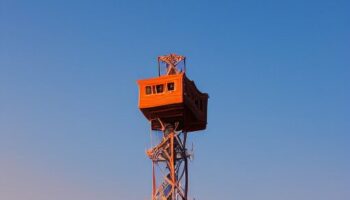
Controversy enlivened the 2nd International Conference Green Telecom India 2010-India’s only event on Green Telecom here today over the allegedly high level of radiation and pollution from telecom towers and equipment including handsets.
Highlighting the lack of regulations on radiation and other pollutants from telecom towers and equipment, Rajiv Mehrotra, president of Telecom Equipment Manufacturers Association (TEMA), asked why it was the same foreign manufacturers who were implementing extremely low levels of radiation for their equipment in their countries were not using these technologies in the items they were selling in this country. According to international data he read, out of global pollution of 3.8 million tonnes , as much as 2.8 million tonnes was generated from India even though India had less number of cell phone subscribers. Mr. Mehrotra alleged “double standards” in the case of foreign manufacturers. The TEMA chairman’s contention however was countered later by director-general of Cellular Operators Association of India, Mr. Rajan Mathew.
“One telecom tower company uses two billion liters of diesel “Mr. Mehrotra, who is also founder chairman and CEO of VNL pointed out.” In the West they do not radiate at such high power in the tower” he added. He also raised the danger from huge use of diesel. “One base station leaves 60 tons of carbon dioxide a year. The numbers already installed spew 6 million tons of CO2 every year. More cells, more noise and more radiation” he remarked recalling that cell phones and towers would reach out to 6 laky villages soon. His remark that sparrows die from radiation from these towers raised a stir in the audience of telecom operators and executives.. “There is no law to regulate these” he regretted. He called for immediate government action to enforce international standards here.
However, Director-General of Cellular Operators Association of India, Rajan Mathew revealed that a joint study of EMF of telecom equipment in 100 locations conducted by telecom operators, IIT Madras and Madurai Engineering College found that in each site the level was a thousand part of what international standards mandated.
The total pollution level from the entire ICT industry was only two per cent of the pollution in this country. As telecom industry forms less than half a per cent of the ICT total, the pollution from it alone could not be alarming, he contended.
Mobility being the major driver of communication in the country with wire lines very much limited, the cell phones were seen as having a disproportionate impact on pollution, Mr. Mathew contended. Another major reason was the extremely limited availability of spectrum in India as against the wider range allotted in the developed countries. This forced the Indian operators to install more cell sites to reach out to larger populations with lower allocation of spectrum.
Another cause was license requirements for a certain level of roll out of the service. “The operators have no choice but to make the best use of the lower spectrum resources” the COAI DG pointed out. However, the operators were now moving from passive infrastructure sharing to active infrastructure sharing. To reduce pollution, operators were using base stations that do not require air-conditioning. Diesel gensets were being substituted with hybrid ones. “We are aware of our responsibility” he stressed..
Several telecom executives emphasized the need for greater availability of grid power in rural areas to obviate the need for setting up diesel gensets. “Government must give power to towers and base stations to reduce use of diesel” BSNL CMD Gopal Das said. Government support was also needed to offset the high cost of using alternative sources of energy like solar panels. BSNL was experimenting with pilot projects in the use of solar panels in Bihar, Maharashtra and other places and wind power in Tamil Nadu and Rajasthan among other pilot projects. The PSU had already achieved savings of Rest 45 crores in energy use in 2008-09 and Rs. 26 crores in 09-10 Mr. Das revealed. USO Fund administrator Ajay Bhattacharya wanted the industry to come out with a fresh set of guidelines to reduce costs of energy use in every sector. The Fund was now assisting the industry in extending its reach to rural areas. “Going green must bring economies in operation” he stressed.
According H. L. Gupta. Head, operations in networks, Bharti Airtel, the number of towers would go up from 3.4 lakhs now to 4.6 lakhs by 2015, base stations from 5.5 lakhs to 10.7 lakhs, the minutes of usage was rising even as average revenue per use was plunging. Use of green technology in “each and every area of operations” was inevitable and was a great opportunity. The present situation where 60 per cent of the energy came from diesel and 40 per cent from the grid needed to be changed to at least half –half of energy from the two sources to reduce pollution. He suggested a mix of solar, wind and biomass for substituting diesel.
In his keynote address, Nokia-Siemens Networks global services sales head Samar Mittal estimated the telecom industry’s energy need would is to 60,000 MW by 2050. “Energy costs are rising” he warned. Alternate energy sources like solar panels were expensive and raise operational costs. Networks used 80 per cent of the total energy in the industry. He quoted data to show how energy efficiency in “mature markets” was almost three times that in emerging markets like India. Nokia-Siemens Networks were experimenting with new renewable energy technologies and that had saved 1.7 GHz of energy in 25 countries.
“The forum presented by the Second International Conference on Green Telecom provides the telecom industry an opportunity to discuss innovative ways to reduce energy spend and CO2 emissions through effective resource utilization alongside smart and holistic network design. Both globally and in India, our comprehensive range of energy efficient and environmentally friendly end-to-end solutions and our Flexi Base Stations are proven to consume exceptionally low power and together with its small size contribute significantly to environmental performance and low CO2 footprint. Nokia Siemens Networks is constantly working on minimizing its carbon footprint as well as helping infrastructure companies communication service providers in utilizing energy most efficiently” added Mr. Samar Mittal, Head of Global Services Sales India Region, Nokia Siemens Networks
Batting for greater use of non-conventional energy sources in telecom energy scene, Dr. Bibek Bandyopadhyay, adviser , Ministry of new and renewable energy, detailed government support for these technologies. Though initial costs of solar panels was high, the life cycle costs were economic and new materials like titanium dioxide in place of highly pure silicon were being tried that would reduce costs significantly. “We are working out cost reduction techniques in use of renewable sources” he revealed.




